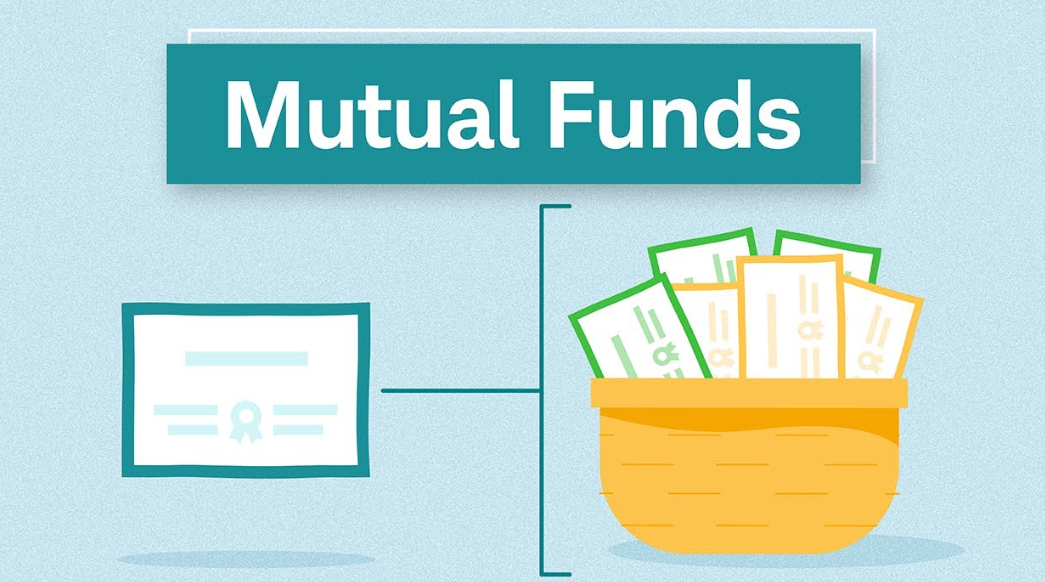
A well-managed portfolio of mutual funds is diverse. It invests funds in foreign and American stocks, bonds, and other financial instruments. It provides active and passively managed funds and growth and value stocks. But most significantly, it favors low-cost funds.
FinanceProsper has compiled a list of the top 10 mutual funds ideal for investors who would like to construct that kind of portfolio on their own.
Summary: Best Mutual Funds
| Fund (ticker) | 10-Year Avg. Ann. Return |
|---|---|
| Fidelity International Index Fund (FSPSX) | 5.10% |
| Fidelity U.S. Sustainability Index Fund (FITLX) | 14.77% since inception (May 2017) |
| Schwab S&P 500 Index Fund (SWPPX) | 12.70% |
| Shelton Nasdaq-100 Index Investor Fund (NASDX) | 17.09% |
| Schwab Fundamental US Large Company Index Fund (SFLNX) | 11.29% |
| Fidelity Intermediate Municipal Income Fund (FLTMX) | 2.15% |
| Dodge & Cox Income (DODIX) | 2.77% |
| Vanguard Long-Term Investment-Grade Investor Shares (VWESX) | 2.64% |
| Schwab Fundamental US Small Company Index Fund (SFSNX) | 8.43% |
| T. Rowe Price Mid-Cap Growth Fund (RPMGX) | 10.43% |
 Fidelity International Index Fund (FSPSX)
Fidelity International Index Fund (FSPSX)
- Expense ratio: 0.035%
- Dividend yield: 2.88%
- 10-year avg. ann. return: 5.10%
Editor’s Take: FSPSX is a low-cost fund with strong returns over time, ideal for international investment with minimal fees.
 Fidelity U.S. Sustainability Index Fund (FITLX)
Fidelity U.S. Sustainability Index Fund (FITLX)
- Expense ratio: 0.11%
- Dividend yield: 0.97%
- Avg. ann. return since inception (May 2017): 14.77%
Editor’s Take: FITLX offers low-cost ESG investments with good returns and focuses on sustainable companies like Microsoft and Tesla.
 Schwab S&P 500 Index Fund (SWPPX)
Schwab S&P 500 Index Fund (SWPPX)
- Expense ratio: 0.02%
- Dividend yield: 1.22%
- 10-year avg. ann. return: 12.70%
Editor’s Take: SWPPX provides broad U.S. market exposure at a very low fee, with strong returns and no minimum investment requirement.
 Shelton Nasdaq-100 Index Fund Investor (NASDX)
Shelton Nasdaq-100 Index Fund Investor (NASDX)
- Expense ratio: 0.52%
- Dividend yield: 6.71%
- 10-year avg. ann. return: 17.09%
Editor’s Take: NASDX has excellent long-term performance with a focus on tech and growth stocks, though it has a higher expense ratio.
 Schwab Fundamental US Large Company Index Fund (SFLNX)
Schwab Fundamental US Large Company Index Fund (SFLNX)
- Expense ratio: 0.25%
- Dividend yield: 1.63%
- 10-year avg. ann. return: 11.29%
Editor’s Take: SFLNX is a value-oriented fund that adjusts based on company fundamentals, performing well in volatile markets.
 Fidelity Intermediate Municipal Income Fund (FLTMX)
Fidelity Intermediate Municipal Income Fund (FLTMX)
- Expense ratio: 0.36%
- Dividend yield: 2.55%
- 10-year avg. ann. return: 2.15%
Editor’s Take: FLTMX offers tax-free income from quality bonds with a moderate yield, suitable for conservative bond investors.
 Dodge & Cox Income Fund (DODIX)
Dodge & Cox Income Fund (DODIX)
- Expense ratio: 0.41%
- Dividend yield: 3.98%
- 10-year avg. ann. return 2.77%
Editor’s Take: DODIX provides solid returns with a focus on high-quality bonds, using fundamental research for investment decisions.
 Vanguard Long-Term Investment-Grade Fund Investor Shares (VWESX)
Vanguard Long-Term Investment-Grade Fund Investor Shares (VWESX)
- Expense ratio: 0.21%
- Dividend yield: 4.68%
- 10-year Avg. Ann. return: 2.64%
Editor’s Take: VWESX is a long-term bond fund that benefits from falling interest rates, with a focus on high-quality corporate bonds.
 Schwab Fundamental US Small Company Index (SFSNX)
Schwab Fundamental US Small Company Index (SFSNX)
- Expense ratio: 0.25%
- Dividend yield: 1.31%
- 10-year avg. ann. return: 8.43%
Editor’s Take: SFSNX focuses on small-cap stocks with strong growth potential and good performance compared to its peers.
 T. Rowe Price Mid-Cap Growth Fund (RPMGX)
T. Rowe Price Mid-Cap Growth Fund (RPMGX)
- Expense ratio: 0.76%
- Dividend yield: 5.98%
- 10-year avg. ann. return: 10.43%
Editor’s Take: RPMGX targets mid-cap growth stocks with careful stock selection and strong returns over the long term.
What is a Mutual Fund?
A mutual fund purchases an investment portfolio of stocks, bonds, and other securities by pooling the money from many participants. A mutual fund’s equity and income are contained in an investor’s share.
Mutual funds present the investor with an opportunity to diversify his portfolio enormously: some hold hundreds, even thousands of different kinds of securities.
The mutual fund’s investment objective will determine the kinds of securities it will buy. A growth fund, for instance, would search for equities with above-average growth potential, but an income fund might hold both bonds and stocks that pay dividends.
How Do Mutual Funds Work?
These stocks stand for ownership of every investment that makes up the fund. For instance, if 10% of a mutual fund’s portfolio were invested in the shares of Tesla, 5% in Comcast shares, and 2% in The Cheesecake Factory, every investor in such a fund would consequently own an equal slice of profit or loss from those various holdings.
Whereas with individual stocks, any mutual fund should be reminded not actually those stocks which it owns but the mutual fund which you own. In the example above, you would not have a claim to the stocks of Tesla, Comcast, and The Cheesecake Factory but you would own shares of some mutual fund owning those stocks.
Distributions are the ways that those accumulated assets in a mutual fund go to the investors. The distributions can be taken as cash by investors or reinvested back into the fund.
Mutual fund shares are bought and sold on the stock exchange just like stocks, but they work a little differently. When the day is almost over, they only trade. You don’t trade them with other investors; you buy and sell them directly with the fund manager.
The fund manager determines the fund’s value, known as the NAV, following the trading day.. Then he used this price to sell or redeem the fund’s shares. This means that you will not know what price you are to pay or receive until the market has closed.
Mutual Fund Fees
Fund management levies fees and other charges on investors to cover certain costs associated with running the fund.
Many funds have lots of different types of fees, and you have to know how you might be charged. To find out exactly what fees are being charged on a mutual fund, you would look to the prospectus and seek out the heading labeled “Shareholder Fees”. Common fees that you may include:
- Expense ratio: This is the principal fee, and it explains what percent of your money goes into paying for the fund’s expenses instead of making money for you. Most mutual funds have an expense ratio, and such an expense will cost more when the funds are actively managed compared to when they are passively managed.
- Sales load: This is a commission paid to brokers for selling you shares of the fund. You sometimes must pay it when you buy shares called “front-end sales loads”-and sometimes when you sell your shares called “back-end sales loads.” To avoid these, look for “no-load mutual funds.”
- 12b-1: Fees include the expenses of marketing and distribution that are deducted from the assets of a fund.
- Redemption fees. This is a fee charged against the sale proceeds from mutual fund shares.
- Exchange fees: The amount one is charged to exchange one mutual fund’s shares for another fund in the same group.
- Purchase: Fees are a sort of commission paid when purchasing a mutual fund.
You want to pay as little in costs as is humanly possible because it nibbles away at your returns. Even minuscule costs aggregate into monstrous sums eroded from your returns through compounding. For instance, only a 1% rise in the fees on a $10,000 investment earning 10% per year will cost over $10,000 after 20 years.
Mutual Fund Taxes
If you hold money in a taxable brokerage account, you’ll likely pay taxes on mutual fund payments. If you have sold your shares for more than you paid for them, then the amount should be reported on your tax return. This is true even if you simply transfer money from one mutual fund to another, and take no money out as cash.
Most mutual funds are set up to make distributions at the end of the year. Every year, an IRS Form 1099-DIV detailing the funds you were awarded will be sent to you.
The type of distribution determines the tax amount. For instance, proceeds from selling a mutual fund you have owned for longer than one year will generally be taxed at more favorable capital gains tax rates. On the other hand, funds from those mutual funds that you have owned for a year or less are considered short-term capital gains and, hence, taxed like ordinary income.
The tax rules are different for qualified accounts, such as individual retirement accounts; you pay tax only when you take the money out of the account.
The Different Types of Mutual Funds
Another way to classify mutual funds is by the kinds of investments they make:
Equity Mutual Funds: Also known as an equity fund, this investment vehicle holds shares of stock in public companies. By and large shareholders of equity funds favor capital appreciation over yield although there are specialty dividend funds that strive to create yield.
Bond mutual funds: These are the fixed-income funds, or bond mutual funds, that invest in Treasurys, municipal bonds, or corporate bonds. The investor of a bond fund usually saves some income and realizes yield.
Balanced funds: They are also called blended funds, mutual funds that invest in both stocks and bonds.
Mutual money market funds: They give small returns but have very low risk. Investors choose them to keep their money safe, not for growth or big returns.
Funds with a target date: These are great for retirement savings. As retirement draws nearer, they make adjustments to their investments to be more cautious.
How To Invest in Mutual Funds
Alternatively, you can buy mutual funds online through a broker, just like stocks. But most people invest in mutual funds through their employer’s 401(k) or through an IRA.
It is your investment goals that will, in essence, spell out the type of mutual fund to select. For example, if your investment goals were so far away that you have years left on your investing timeline, then stock mutual funds may make good investments. If your goal is just in the next few years, you may need the stability provided by bond funds.
Also, watch for fees. They eat into your total returns. The expense ratio may be a relatively low industry average — 0.57% — but many funds charge far less. In fact, some have no expense ratio at all, such as Fidelity Investments’ Zero Funds.
Why Invest in Mutual Funds?
Mutual funds bring together in one instrument the best features, making them an excellent vehicle for many individual investors. This would include:
- Diversification: The simplest way to put it is to say, “Don’t put all your eggs in one basket.” The mutual funds follow this since they are investing in a bundle of diversified investments that include a pool of several companies and industries. This helps to reduce potential risks and increase the profit margins.
- Affordability: The majority of mutual funds have low initial investment requirements and affordable yearly costs.
- Professional management: Few investors have either the time or experience to manage a diversified securities portfolio. When you invest in a mutual fund, the fees are used, in part, to compensate professional managers who choose the securities the fund buys and sells and monitor the performance of the stocks in markets that are rising and falling.
- Liquidity: You are free to sell your shares at any time if you own any. For whatever the current NAV is plus whatever fees you must pay to redeem the shares, the fund will always buy the shares back from you.
When you invest in a mutual fund, your money is automatically diversified across the board immediately. Every dollar you put in buys you a certain number of shares, which represent an equal interest in all the underlying securities owned by the mutual fund. Let’s say you invest $1 in a mutual fund that has 100 stocks. Your 100 securities will each receive one dollar. Even better, your dollar is professionally managed, just like the $100,000 investor in that fund.
How To Choose the Best Mutual Funds
There are thousands of mutual funds, but that only means you have to understand pretty well your financial goals to be able to pick just the right one meant for you.
Will the funds be invested for retirement in a 401(k)? Or is making money over time more important to you, or does getting an income seem important now? That is why answering questions about your goals with money is critical before jumping into taking a look at the best mutual funds.
Once your goals are clear, you should have a fair idea about the quantum of risk you can take. Will a small short-term fluctuation in the value of your mutual fund be acceptable for better long-term returns? Or will you be satisfied with slower but more steady growth in value and regular income payments along with the same?
You probably understood the link between risk and return. To put it simply, you have to be comfortable with the expected return given the degree of fluctuation in your mutual fund investments.
After you have an acceptable level of risk selected, then look at mutual fund lists like this and do the research for each fund. Learn how the fund works so you can see if it helps you achieve your goals and is within your risk tolerance.
Determine who the fund management team’s actual members are. Have they been successful in the past? For active funds like those above, you really want to check the past results for the managers.
Is it a high or low turnover rate for buying and selling its investments? The more the fund managers are buying and selling, the more it causes taxable events. That might not be a problem if you own mutual fund shares in some sort of retirement account to help with taxes. It can be a big drainer on your long-term profits if you own them outright in a regular brokerage account.
FAQs
What are the relative benefits of mutual funds?
Mutual funds allow an investor to keep their portfolio diversified and safe. For the shareholder, mutual funds assure returns in the following ways:
- Capital gains distributions. When managers of mutual funds realize that the value of portfolio holdings has appreciated, they may sell assets from time to time. Sales result in capital gains, which the fund distributes to shareholders at year-end, less any capital losses.
- Dividend payment. Mutual funds make their money back through bond interest or stocks paying dividends. Funds disburse this money to shareholders regularly.
- Appreciation of a portfolio. The value of a mutual fund rises in direct proportion to the portfolio’s overall market value appreciation. Due to the mutual fund’s higher NAV, the value of your shares will rise.
What are some mutual fund risks?
Mutual funds are not exempt from the inherent risk associated with all investments. You may lose some, or even all, of your investment because the portfolio value drops or due to a decline in interest received on a bond or dividends on a stock when economic circumstances change.
Past performance with mutual funds is not very significant because it does not indicate future performance. However, the historical performance of a mutual fund will help you determine how volatile or stable it has been.



